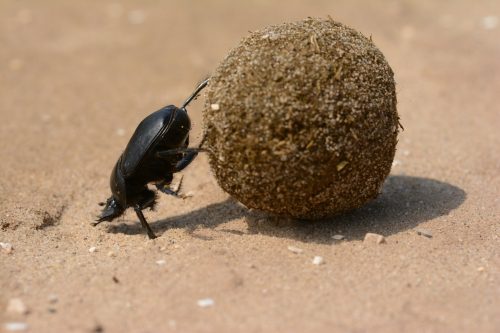Beetles navigate with light from the Milky Way
At some point, we’ve all stumbled over a chair on the way to turn on the light in a dark room. Why don’t animals have this problem? Last year, researchers from Lund University, Sweden, set out to understand how nocturnal animals, specifically dung beetles, orient themselves while traveling through dark nights. They discovered that the beetles use light from the Milky Way to follow their course1.
Dung beetles typically roll dung balls in a straight line, but only when there is sunlight or moonlight. “When the night is completely overcast, and they can’t see the stars, they lose this ability and roll around in circles,” said postdoctoral fellow James Foster, the lead author on the study2. By simulating the night sky and gradually removing individual patterns of bright stars, the researchers eventually found that the beetles only utilize the brightness gradient of light from the Milky Way to orient themselves, and that the star patterns were not helpful.
Foster points out that this finding is unsurprising because beetles have compound eyes, which blur any image they perceive and prevent them from distinguishing star patterns. “Recognizing star patterns also probably requires too much processing power for their brains,” Foster said.
This finding has the potential to improve machine vision under dim light conditions. Moreover, if many animals only use the brightness gradient of light in the night sky, light pollution has serious implications, possibly inhibiting the animals’ ability to navigate at night. Foster is currently studying the extent of this problem.

